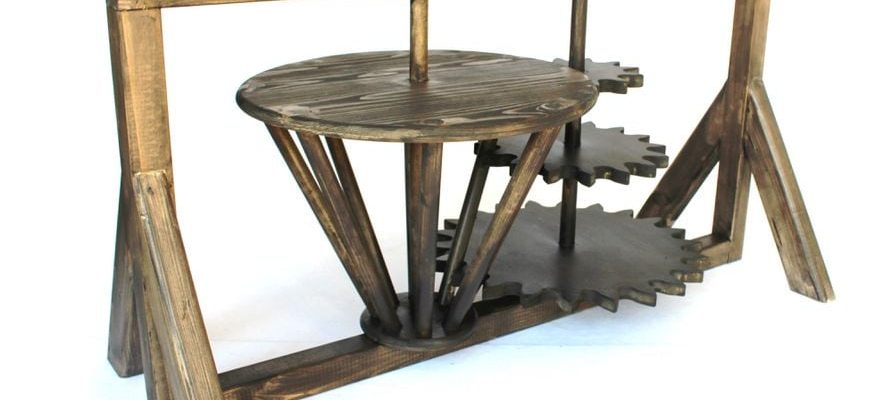The genius of the Italian Renaissance is best known for the twenty or so paintings attributed to him. The author of The Mona Lisa However, he also left us more than 6,000 pages of notes and drawings of inventions. These are the codices that Jean-Christophe Hubert, Belgian art historian, looked into in 2015, with a new idea in mind: to materialize a hundred of these machines imagined by Leonardo da Vinci at a time when scientific research was the equal of all the arts. Led by a team of engineers and carpenters, the project gave birth to an XXL exhibition of wooden models, which bear witness to the limitless imagination displayed by the Florentine master in all fields: battlefields, hydraulic engineering and aeronautics, textile industry, metallurgy, measuring objects, astrology… After Bruges, Istanbul, Lyon and even Barcelona, the route combining science and history unfolds in Rueil-Malmaison (Hauts-de-Seine), in the walls of iron and glass from Atelier Grognard, a former zinc plate factory from the Belle Epoque.
“We often ignore it, but Leonardo did not invent anything, neither the bicycle nor the parachute: he imagined, sketched, but not created,” Jean-Christophe Hubert immediately warns. The aerial screw, for example, which is based on the visionary principle of a propeller aircraft, was not viable with the sole energy of human and animal muscular propulsion available in the 1480s. When da Vinci died in 1519 , the notebooks that he filled with mathematical formulas and sketches were scattered among individuals and were only made public in the 19th century, without ever having given rise to constructions at the time. Much more than the brush, these codices constitute the artist’s daily livelihood, thanks to the support of his patrons, Ludovico Sforza then Francis I, who gave him carte blanche to dream on paper of flying machines, of tanks. leg cutters, sliding bridges on wheels, mechanical drums, ball bearings…
“Conical regulator”, model developed from the notebooks of Leonardo da Vinci.
/ © Jean-Christophe Hubert
Moreover, the opportunist Leonardo willingly exploits old research to develop it. Thus, the measuring instrument, invention of Pliny in his Natural stories, in the 1st century, which he perfected by designing an odometer measuring the distance traveled, the operation of which is based on the rotation of one or two vertical wheels operating a horizontal wheel. Or the bladed reaper which dates back to Plutarch’s story of Alexander the Great confronting Darius’ scythe chariots. Vinci took inspiration from this by imagining a machine which moves the gear of four beams armed with a ball whose rotation speed makes it possible to mow down attackers. Here we can operate several of these mechanisms ourselves because around twenty models can be manipulated by the visitor. This undoubtedly explains the success of the exhibition with families.
Without having followed the slightest training, the illegitimate offspring of a peasant woman and a Tuscan notary da Vinci’s first asset is his greed for knowledge. “He had the largest known library of the time, no printed book escaped him,” points out the commissioner. All of Leonardo da Vinci’s research revolves around the same process: observing then, secondly, understanding. “The more we know, the more we love,” he scribbles in his notebooks, summarizing with this confession his tireless curiosity and his thirst for discovery.
